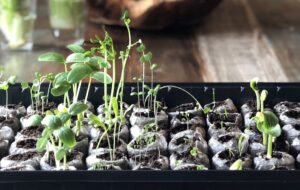 Find the complete tour guidebook by clicking HERE.
Find the complete tour guidebook by clicking HERE.
Brought to you by the Millstone Institute of Preservation, the Spring Harvest Tour 2025 will take you on a self-guided tour of over 30 different local businesses. Highlighting local producers, growers, and creators through South Georgia and North Florida, the tour will take place May 10th and 11th.
Many of the featured businesses will be hosting classes, workshops, talks, or other activities throughout the weekend. More information on each participant’s offering can be found in the guidebook. Some highlights include: Allison Acres offering a class on blueberry care, Sandhills Native Nursery offering a Native Harvest talk, Forty Creeks Farms’ Sustainable Gardening Practices talk, and Sweet Magnolia Ridge’s cooking demonstrations – all just a fraction of the offered opportunities!
The Institute recommends that you come prepared: bring a cooler for all your goodies, wear close-toed shoes, bring sunscreen and bug spray, carry cash, and bring plenty of water.




 The Jackson County Public Library is hosting its Seed Library Kickoff tomorrow! Head over to the library from 10:30am to 1:30pm to benefit from this season’s seeds. Adults with a current library card can get up to FOUR seed packs. The Library would like to thank the Master Gardener Program and the UF|IFAS Extension Office for their support. Learn more by visiting the
The Jackson County Public Library is hosting its Seed Library Kickoff tomorrow! Head over to the library from 10:30am to 1:30pm to benefit from this season’s seeds. Adults with a current library card can get up to FOUR seed packs. The Library would like to thank the Master Gardener Program and the UF|IFAS Extension Office for their support. Learn more by visiting the 


 Now is the perfect time to begin planting your garden for the summer haul! April is a good time to transplant gingers, roselle, and tomatoes. If you have any starters ready to put in the ground, now’s the time! April is also a good time to transplant long squash, luffa, papaya, Seminole pumpkin, and sweet potatoes; however, these baby plants are still a little sensitive to the weather, so be sure to watch these transplants carefully after planting them. There is also a number of seeds that can be planted in April including beans (bush, lima, pole), cantaloupes, corn, cucumbers, okra, peanuts, peas, squashes, and watermelons.
Now is the perfect time to begin planting your garden for the summer haul! April is a good time to transplant gingers, roselle, and tomatoes. If you have any starters ready to put in the ground, now’s the time! April is also a good time to transplant long squash, luffa, papaya, Seminole pumpkin, and sweet potatoes; however, these baby plants are still a little sensitive to the weather, so be sure to watch these transplants carefully after planting them. There is also a number of seeds that can be planted in April including beans (bush, lima, pole), cantaloupes, corn, cucumbers, okra, peanuts, peas, squashes, and watermelons.